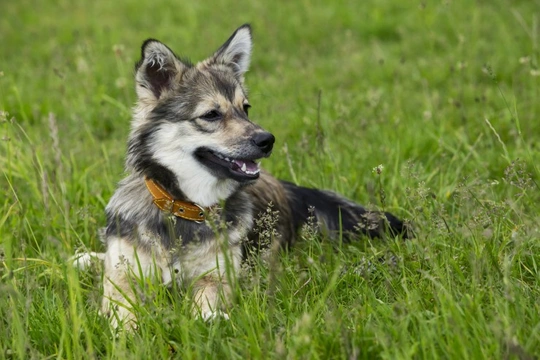
Finding out more about the Swedish Vallhund dog breed
The Swedish Vallhund is not as popular in the UK as they are in their home country of Sweden, but interestingly they have a very old historical connection to Wales, and if you take a look at the Vallhund either in real life or in a photo, you will probably immediately see the Corgi-like resemblance!
These small, lively dogs are hugely energetic and are by no means the lapdog types that their size and build implies, but this is by no means the most interesting thing about this very ancient and very distinctive dog, with a very long known history.
If you have spotted a Swedish Vallhund out and about and want to find out more about them or are considering the Vallhund a potential future pet, this article will provide some interesting insights and information about this very long established small dog breed. Read on to find out more.
They carry the gene for dwarfism
The first thing you will notice about the Swedish Vallhund is that they have very short legs with a normal body build-much like the Dachshund and the Welsh corgi. This is caused by a form of canine achondroplasia, or to give it its more common term, dwarfism-this is the reason behind their average-sized heads and bodies but very short legs!
They are close relatives of the Welsh corgi
It is undeniable that the Swedish Vallhund looks a lot like the two Welsh corgi breeds (Cardigan and Pembroke respectively) and this is in fact because the breeds are reasonably closely related! There are a lot of shared traits between the two breeds on both a genetic and physical level, and both breeds have a similar history of working roles in their home countries too.
The two breeds separated as far back as the eighth or ninth century-although historians are undecided as to whether the Vallhund is an ancestor to the corgi, or vice versa.
They used to be companions to the Vikings
The known history of the Swedish Vallhund goes way back for over a thousand years, in a form very similar to the modern day appearance of dogs of the breed. The Welsh-Swedish connection began back then too, when Viking raiders from Sweden were making inroads into the UK, including Wales.
This is almost certainly the explanation for the connection between the Vallhund and the Corgi-either Vikings brought Vallhunds to Wales and so, began the corgi breed, or took corgis back to Sweden with them, and so founded the Swedish Vallhund!
They are really efficient working dogs
The build of the Swedish Vallhund may appear rather comical at a glance, but these dogs are by no means simply lapdogs and entertainers-they are highly efficient working dogs and have one of the highest levels of exercise requirements of any dog breed, which can mean that meeting their needs as pets and companions can be a challenge.
The Vallhund likes to be outside running around all day long, and they also have strong herding instincts-thanks to their historical usage as cattle dogs, with the speed to nip at the heels of reluctant cows and the low profiles to avoid getting a kick for their troubles!
Their tails are a genetic lottery!
With most pedigree dog breeds, you expect dogs of the breed to be fairly uniform in terms of conformation, shape and size, but when it comes to the tail of the Swedish Vallhund, it all becomes rather unpredictable.
Dogs of the breed can be born with a wide variation of different tail lengths, even across dogs with the same ancestry. The breed standard for the Swedish Vallhund accepts full-length tails, natural bobtails and even completely absent tails, and it is possible for all three variants to appear within the same litter!
They nearly didn’t make it into the 21st century
Like many dog breeds that historically had most of their population concentrated within one country or that were fairly small in numbers to begin with, the Swedish Vallhund almost died out entirely as a result of World War 2.
While Sweden, as a neutral country, was not as badly affected by WW2 as other parts of Europe, resources nonetheless became scarce as the war continued, and for many people, keeping dogs as pets and companions rather than working dogs became a luxury that few could afford.
After the war, one breeder made concerted efforts to up the population numbers of dogs of the breed, and raise interest in them throughout the wider world. Despite their long history, the breed was only formally introduced to the UK and recognised by the UK Kennel Club in 1984, and their numbers still remain relatively small outside of their home country, where they are very highly regarded and popular as pets.



